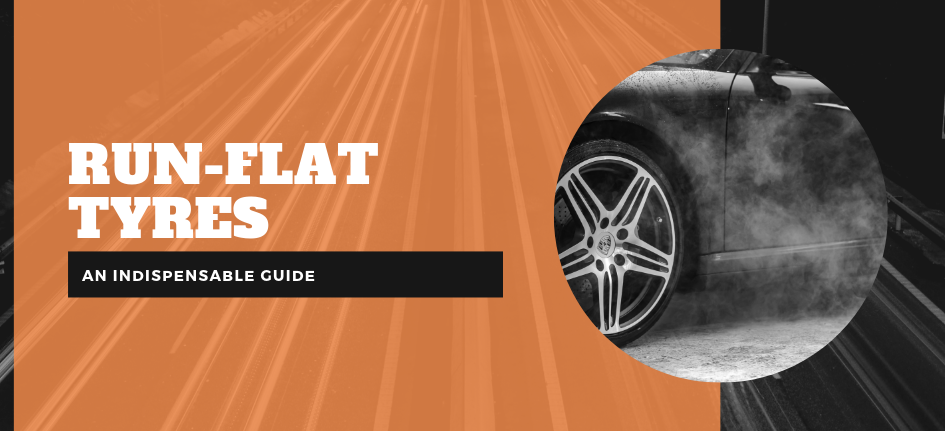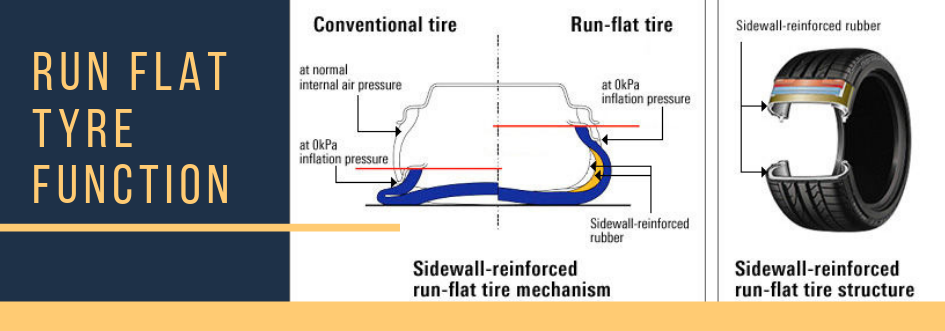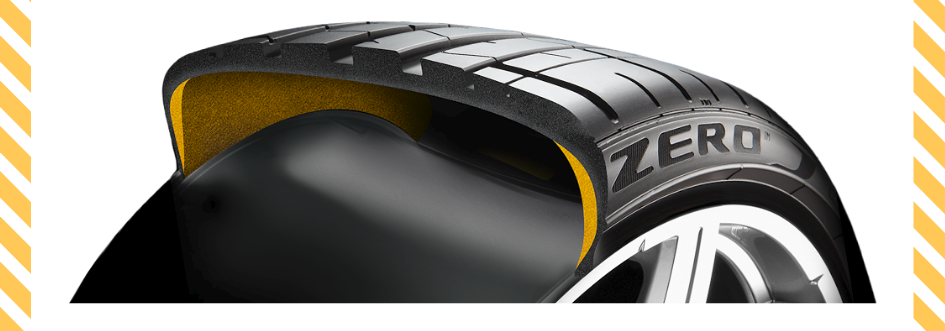Run-flat tyres are purposefully designed to travel some distance in spite of the puncture. Run-flat tyres are also known as self-supporting tyres, mobility tyres etc; they are manufactured to operate even at zero pressure. Run-flat tyres are a flexible and safer option, as it provides the capability to drive with fully deflated tyres. When your vehicle is fitted out with run-flat tyres, you’re always prepared to handle the inconveniences caused by a puncture. Your trip won’t have to be halted and that you can continue driving for a certain distance without having to replace the tyre of your vehicle. In addition, the unique construction of the tyre significantly lowers the likelihood of a hazardous tyre blowout. Run-flat tyres have set the beginning of a new era of safe motoring and are becoming accepted gradually. These days, the auto tyre industry provides diverse types of run-flat tyre variants. The makers term the technology in a different way and brand their tyres accordingly. Here are some of the major brands and the terminology used by them for defining Run-Flat Tyre:
BRAND RUN-FLAT TYRE TERMINOLOGY
- Dunlop Tyres DSST (Dunlop Self Supporting Tyre)
- Michelin Tyres ZP (Zero Pressure)
- Bridgestone Tyres RFT (Run-Flat Tyre)
- Pirelli Tyres Identified as a “Run Flat” tyre
- Continental Tyres SSR (Self Supporting Run-Flat)
- Goodyear Tyres EMT (Extended Mobility Tyre or ROF Run on Flat)
HOW DOES “RUN FLAT TYRES” FUNCTION?
Traditional tyres require air to stay firm. Nonetheless, run-flat tyres are made with a resistant sidewall that makes sure that the tyres remain firm even in the absence of air pressure. The resistant tyre’s outer shell aids to keep the rubber intact without the air. This helps the tyre to support your car even with a punctured tyre. The sturdy rubber tucks provisionally support your vehicle’s weight to offer a run-on period after a deflation.
RUN-FLAT TYRE ADVANTAGES
- Lesser danger due to a tyre blowout.
- Reduced likelihood of being stranded.
- As an extra tyre is not needed to carry along, it can save essential space and weight.
- Get rid of the requirement to replace the tyre at the roadside or in critical conditions.
WHAT’S THE DISTANCE YOU CAN RIDE WITH A RUN-FLAT TYRE?
Yes, once the Run-Flat Tyre gets struck with a puncture, there is a restricted distance that you can ride on it. At most, you can drive another 80 kilometres at the speed of around 80 km/h. Hopefully, this distance is adequate to reach the next garage to have your vehicle tyre’s puncture repaired or to reach any other safe location. The accurate distance that you can travel is also decided by other factors like the conditions you’re driving through, you’re driving speed and the total load of the vehicle.
VEHICLES GETTING RUN-FLAT TYRES AS THE ORIGINAL EQUIPMENT
With the increase in demand for Run-Flat Tyres, a rising number of makers are opting to fit new vehicles with Run-Flat Tyres. Therefore, if you happen to buy a new Mercedes, BMW or Mini, it may have a Run-Flat Tyre. It means spare tyre and changing tools might not be included.
CAN RUN-FLAT TYRES BE REPAIRED
Well, the majority of the run-flat tyres can be repaired. Nonetheless, as it’s for traditional tyres, run-flat tyres can just be repaired for damages to the crown of the tyre. Damage to the shoulder or sidewall of the tyre is beyond any repairs. Before any repair process is attempted, it’s important to look over the tyre carefully to know about the internal damage.
THE DURABILITY OF A RUN-FLAT TYRE
The material used for manufacturing run-flat tyres is the same as used to make conventional tyres. This indicates that the rate of deterioration of the two tyres is the same. The best way to extend the life of a run-flat tyre is by maintaining the tyres by making sure that the correct air pressure is maintained at all times.
RUN-FLAT TYRE – ABOUT MIXING BRANDS
Each tyre has its own unique features and it is recommended to stick to the instructions of the manufacturer when thinking of mixing tyre brands. However, it’s highly recommended to fit the same brand and tyre type along the vehicle’s axle. This will guarantee that the two front tyres match each other.
FINAL WORDS
From the safety perspective, it’s crucial to reduce not only your vehicle’s speed but also the distance travelled when riding on a deflated run-flat tyre. If your vehicle originally came equipped with run-flat tyres, then it’s highly recommended that you stick to the same type of tyres. Because making a change can, in fact, cause a nasty impact on the handling, as the vehicles’ suspension was in the first place fitted out to suit Run-Flat Tyres. Nevertheless, if you want to change to conventional tyres, then Eagle Tyres’ has the specialist auto technicians to make it effortless for you.








